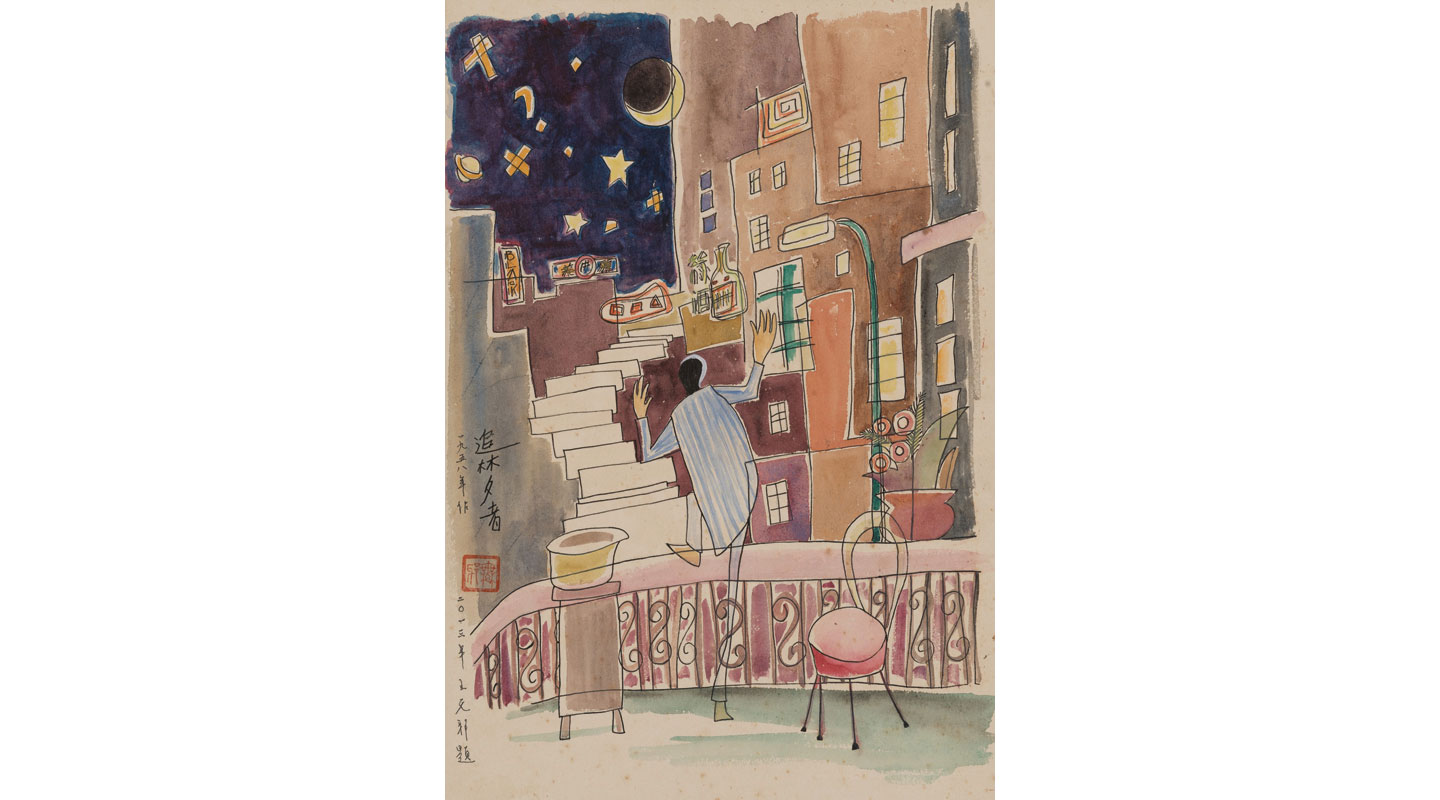Dear readers, With the launch of e-newsletter CUHK in Focus, CUHKUPDates has retired and this site will no longer be updated. To stay abreast of the University’s latest news, please go to https://focus.cuhk.edu.hk. Thank you.
A Self-Portrait of the Artist as a Young Man

Under a moonlit sky, a silhouetted figure climbs out of the balcony and reaches for the steps that will lead him out of his current abode. The figure raises his arms to embrace this newfound, if unexpected, freedom. Still in pajamas, he cannot wait to embark on the path to his destiny. While his imminent journey is filled with unknowns and while his face is concealed from the viewer, optimism abounds. Leaving his comfort zone to chase a dream may be an impulsive decision, but the dream chaser is not concerned with what others may consider as unrealistic pursuit. What is realistic anyway? Is there such a thing as a realistic or rational pursuit in arts?
If the answer to the second question is affirmative in the vibrant twenty-first century art scene filled with burgeoning art fairs and affluent collectors, it was not necessarily the case when Dream Chaser was painted in 1958. At that time, there were hardly any platforms to introduce or display works by fledgling artists—or well-known artists for that matter—and the City Hall Museum and Art Gallery (forerunner of the Hong Kong Museum of Art) had yet to be built. Wucius Wong, then 22 years of age, had only been painting for two years. His interest in the arts was not cultivated at home, which did not have the means to send him to university upon his graduation from St. Joseph’s College. Subsequently, Wong earned a living working as a clerk in a commercial firm. Though he had a stable job, he did not find fulfillment in the commercial world. His spare time was spent on painting and publishing poetry. The year 1958 was a turning point for Wong, because he had co-founded and chaired the Modern Literature and Art Association, and he also began to learn to paint under the pioneer in modern painting Lui Shou-kwan (1919–1975). Wong would ultimately have to choose between art and literature, and his choice of art may be cued from this visual manifestation of his dream. In short, this painting of a dream is really about his dream of painting.
At first glance, the painting may appear to be a freehand by an amateur artist. Yet the fluid and confident execution of lines, the tight composition with logical spatial recession, and the harmonious use of colours indicate that it came from the hand of a master. More importantly, the cartoonish style is central to the meaning of the painting. As the subject of the painting—chasing dream—may be considered a fantasy, there could hardly be a better way to convey this theme than in a style that is by definition drawn from both fantasy and reality. As such, it is not incumbent upon the viewer to find reasons for all or any of the features, e.g., how there could be steps outside the balcony, to where they lead, etc. We are thus led in to a world of real fantasy, where one does not need to make sense of the situation, but simply to make the best out of it. The underlying message appears to be that all dreams are possible. Fittingly, the artist, who’s now an octogenarian, has been living his dream for six decades.
The painting had been exhibited at Dream Chaser: Early Paintings of Professor Wucius Wong at the Art Museum until 31 Aug 2016.
This article was originally published in No. 481, Newsletter in Aug 2016.